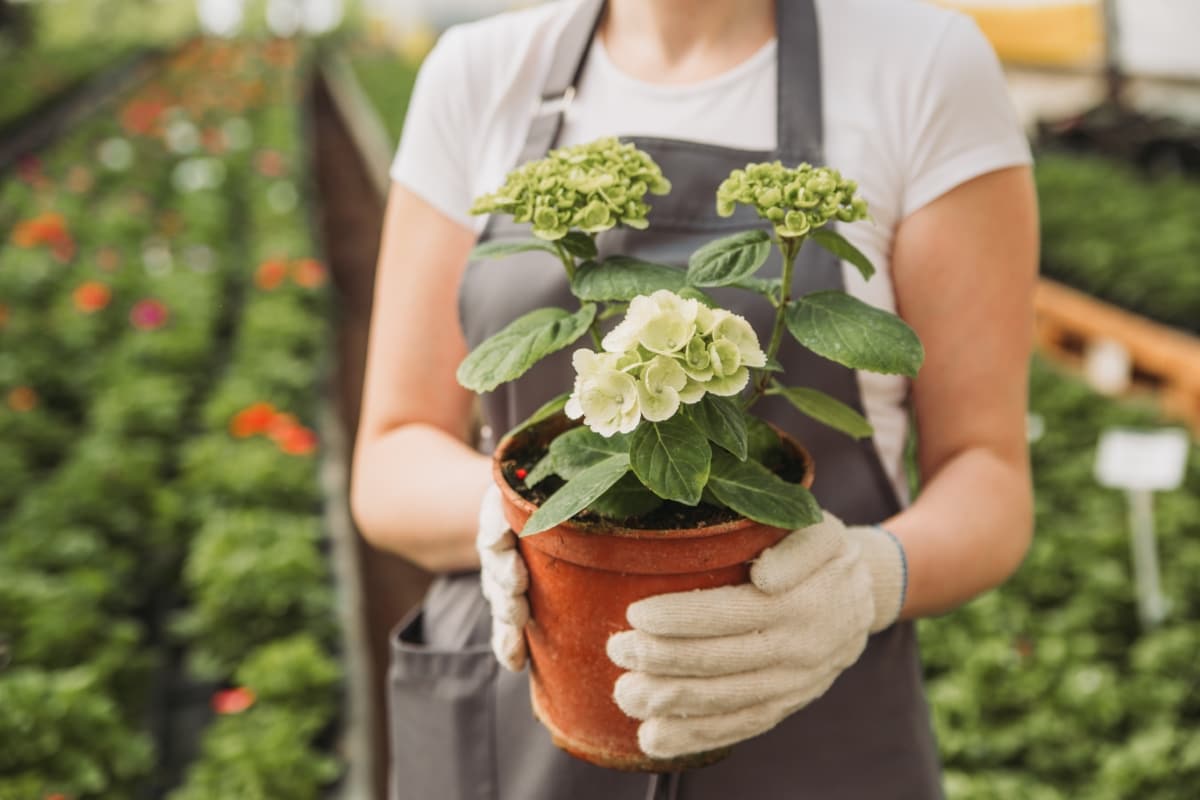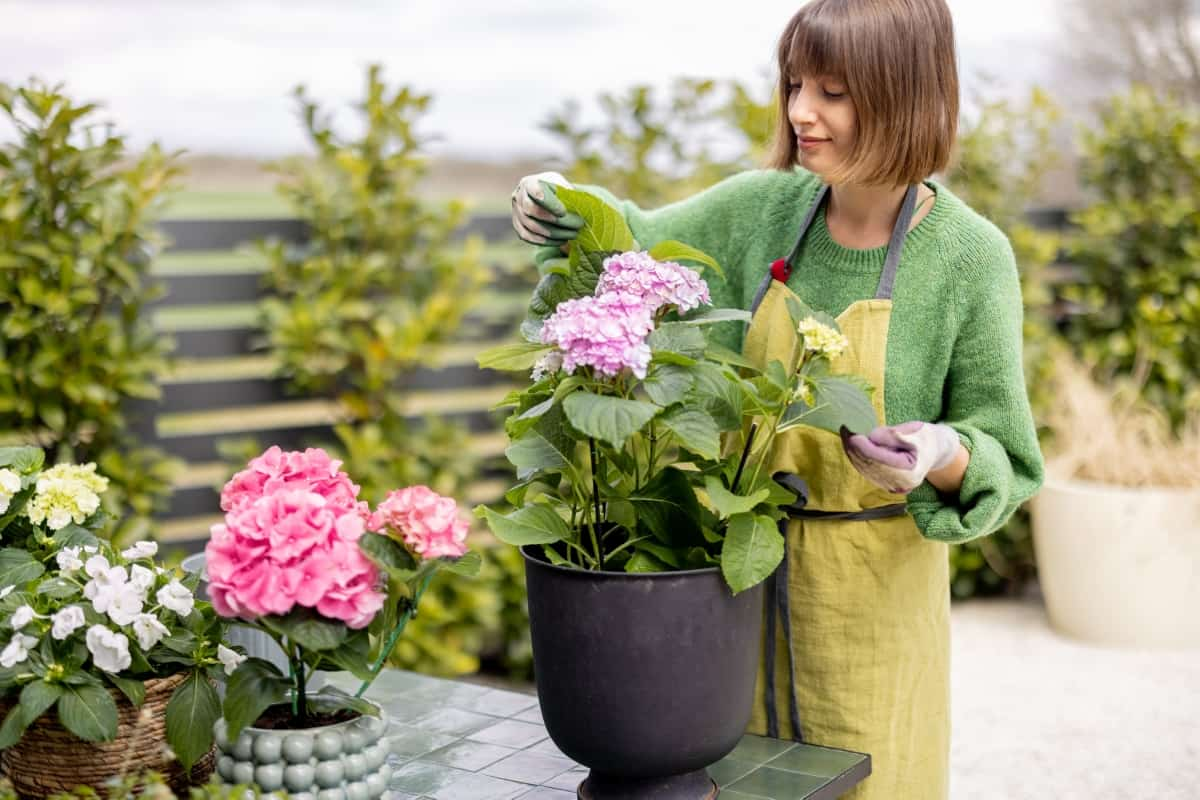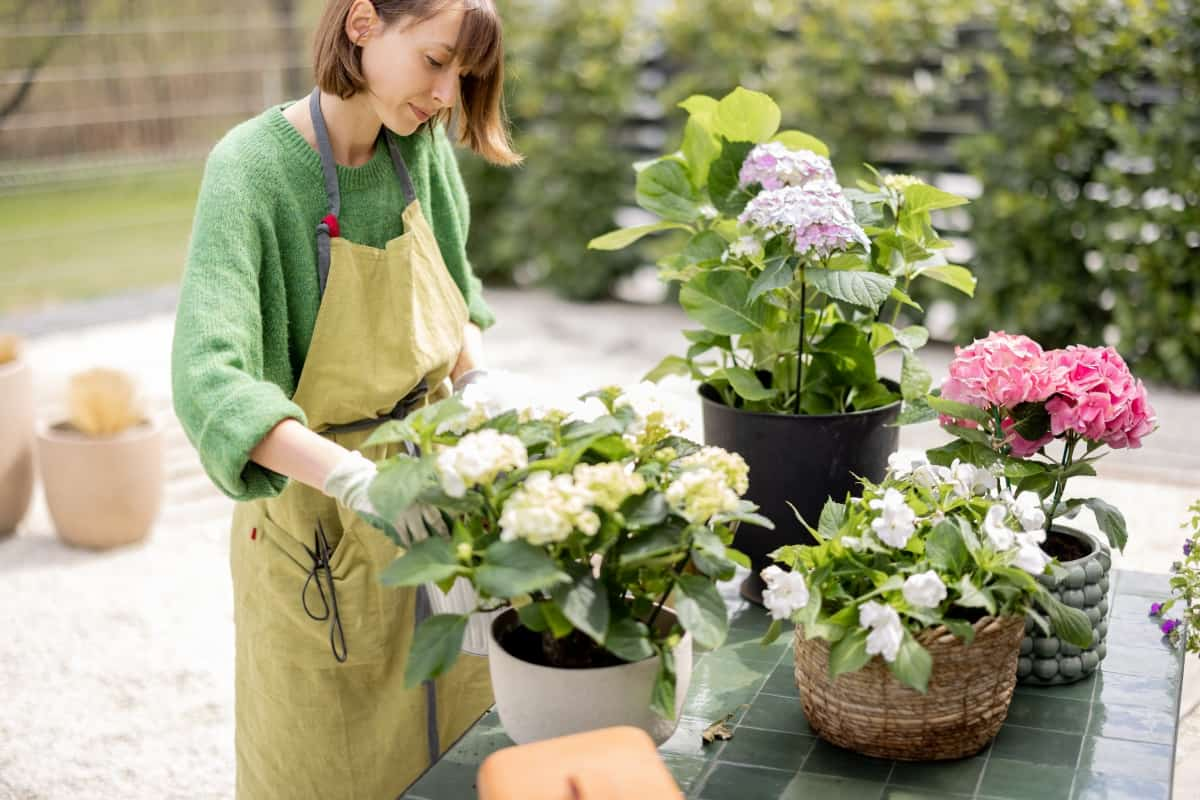Potted Hydrangeas are a delightful addition to any garden or indoor space. Their vibrant blooms and lush foliage can brighten up any corner with their beauty. If your potted Hydrangea is not blooming as expected, don’t fret. By addressing potted Hydrangea flowering problems such as improper pruning and lack of adequate sunlight, you can help maximize potted Hydrangea flower yield. Remember that with proper care and attention to its needs, your Hydrangea can thrive and reward you with stunning blooms.

10 Reasons Why My Potted Hydrangea Not Blooming
Improper Pruning
One common reason why your Hydrangea is not blooming in the pot as expected could be due to improper pruning. When it comes to overcoming barriers to potted Hydrangea flowering, pruning plays a crucial role. However, if done incorrectly, it can hinder blooming rather than promote it.
Improper pruning can remove potential flower buds or disrupt the plant’s growth cycle. To enhance potted Hydrangea flower growth, make sure you understand the proper techniques for pruning. It’s essential to prune at the right time of year and in the correct manner based on the specific type of Hydrangea you have.
Insufficient Light
Hydrangeas thrive in bright, indirect sunlight, so if they are not receiving enough light, they may struggle to produce blooms. Make sure to place your potted Hydrangea in a location where it can get at least 4-6 hours of sunlight per day. If you notice that the plant is stretching towards the light or has pale leaves, it might be a sign that it needs more sun exposure.
Consider moving your Hydrangea to a spot with better lighting conditions or supplementing it with artificial grow lights if natural light is limited. Remember, proper lighting plays a crucial role in the blooming process of your potted Hydrangea plants.
Inadequate Watering
Hydrangeas are thirsty plants, and not giving them enough water can lead to stress and stunted growth. When it comes to watering your potted Hydrangea, consistency is key. Make sure the soil is moist but not waterlogged. Check the soil regularly by sticking your finger about an inch deep – if it feels dry, it’s time to give your plant a drink. During hot summer months, you may need to water more frequently as evaporation rates increase. However, be cautious of overwatering as well, which can cause root rot and other issues.
Nutrient Deficiency
One common reason for potted Hydrangea not flowering as expected is nutrient deficiency. When it comes to dealing with potted Hydrangea bloom deficiency, nitrogen, phosphorus, and potassium are key nutrients that play a key role in promoting flower production. If your plant lacks these nutrients, it may struggle to bloom to its full potential.
When it comes to boosting flower production in potted Hydrangeas, consider using a well-balanced fertilizer specifically formulated for flowering plants to restore blooming in potted Hydrangeas. Regularly inspect the leaves of your Hydrangea for any signs of yellowing or discoloration, which could indicate nutrient deficiencies that need addressing.
Improper Soil pH
The common cause of potted Hydrangea flower failure is due to improper soil pH. Hydrangeas are unique in that the color of their blooms can change based on the acidity or alkalinity of the soil they are planted in. If your Hydrangea’s soil pH is off, it can affect its ability to absorb essential nutrients. To troubleshoot non-flowering potted Hydrangeas, it’s important to ensure that your Hydrangea is planted in well-draining soil with a pH level that suits its variety – typically around 5.5 to 6.5 for most cultivars.
In case you missed it: 10 Reasons Why is My Wisteria Not Blooming: Remedies and Treatment

How to make potted Hydrangeas bloom? If you find that the pH level is too high or too low, there are ways to adjust it accordingly. For acidic-loving Hydrangeas like blue varieties, adding sulfur can help lower the pH. On the other hand, if your Hydrangea prefers alkaline conditions like pink varieties, incorporating lime into the soil may be necessary.
Frost Damage
When temperatures plummet unexpectedly, these delicate beauties can be left vulnerable to the cold. Frost can cause wilting, browning of leaves, and even damage to the roots. To troubleshoot the lack of blooms in potted Hydrangeas, it’s crucial to keep an eye on weather forecasts and take necessary precautions.
Covering your Hydrangea with a light cloth or moving it indoors during particularly cold nights can help protect it from harm. Additionally, placing mulch around the base of the plant can provide added insulation. Trim away any damaged parts carefully and ensure that the plant receives adequate sunlight and moisture to aid in its recovery process.
Pests and Diseases
Pests and diseases can damage your potted Hydrangea, causing it to struggle and not produce those beautiful blooms you’ve been eagerly waiting for. These pesky invaders can range from aphids sucking the sap out of your plant to powdery mildew leaving a white powdery residue on the leaves. Aphids are tiny insects that eat the tender new growth of Hydrangeas, while spider mites create fine webbing between leaves as they suck vital fluids from the plant.
Keep an eye out for any signs of these pests and act promptly before they cause serious damage. In terms of diseases, powdery mildew is a common culprit that thrives in humid conditions. This fungal disease can weaken your Hydrangea’s overall health and reduce its ability to bloom. Ensure good air circulation around your plant and avoid overhead watering to prevent this issue from taking hold.
Transplant Shock
One common reason why your Hydrangea pot plant is not producing blooms is due to transplant shock. When you move a plant from one location to another, it can experience stress as it adjusts to its new environment. This shock can disrupt the normal growth and blooming cycle of your Hydrangea. Transplant shock often occurs when the plant’s roots are disturbed during the transplanting process.
In case you missed it: 10 Reasons Why is My Goldfish Plant Not Blooming: Remedies and Treatment

It can take some time for the roots to establish themselves in their new home, which may delay or inhibit flowering. To improve potted Hydrangea flowering performance, make sure it is receiving adequate sunlight, water, and nutrients. Be patient with your plant as it acclimates to its new surroundings. Avoid overwatering or fertilizing during this sensitive period.
Genetic Factors
Genetic makeup determines many aspects of a plant’s growth and development, including its ability to produce flowers. Some varieties of Hydrangeas are simply bred to bloom less abundantly than others due to their genetic traits. If you find that no matter what you do, your potted Hydrangea refuses to bloom as profusely as you’d like, it may be worth considering the possibility that its genetics are influencing this behavior. While there may not be much you can do to change the inherent characteristics of the plant itself, understanding this aspect can help manage expectations and tailor care practices accordingly.
Environmental Stress
Factors like extreme temperatures, strong winds, and pollution can all contribute to environmental stress. Hydrangeas are sensitive plants that thrive in stable conditions, so sudden changes in their environment can hinder their ability to bloom. When it comes to tips to encourage blooming in potted Hydrangeas, consider providing some protection for your Hydrangea during periods of extreme weather by moving it to a more sheltered area or using mulch around the base.
Additionally, be mindful of any nearby sources of pollution that may be affecting your plant’s health. Regularly inspect your Hydrangea for any signs of distress caused by environmental factors and take appropriate measures to address them promptly.
In case you missed it: 10 Reasons Why Your Iris is Not Blooming: Remedies and Treatment

Conclusion
It’s essential to understand that many factors can contribute to your potted Hydrangea not blooming. With proper care and attention to detail tailored to your Hydrangea’s specific needs, you can encourage potted Hydrangea blossoms.
- Flower Garden Designs and Layouts for Beginners
- Planting and Spacing Techniques in Papaya: A Beginner’s Guide
- Growing Gold: Essential Techniques for Planting Pineapples
- How to Make Kalanchoe Plant Bushy: Home Remedies and Solutions
- 11 Reasons Why Your Gardenia is Not Blooming: Home Remedies and Solutions
- Eco Elegance: The Guide to Designing a Drought-Tolerant Landscape
- Gardening on a Slope: Strategies for Hillside Landscaping
- Nourish and Flourish: Top Organic Mulches for Thriving House Plants
- Everything You Want to Know about Indian Mogra Flower: Discover Uses and Growing